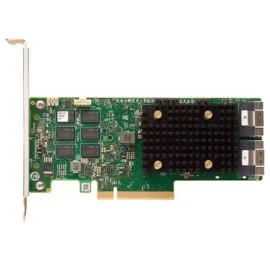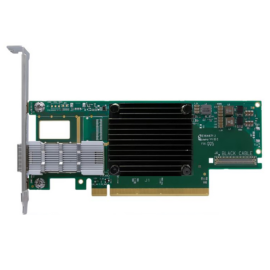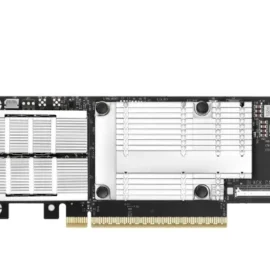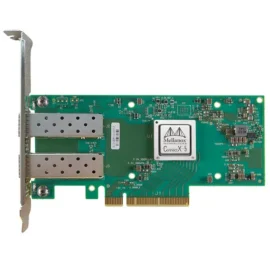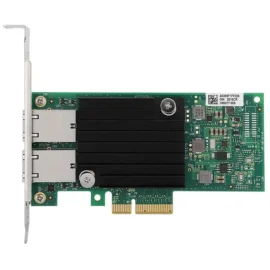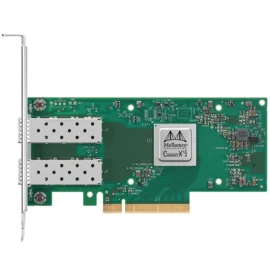InfiniBand (IB) is a high-performance networking technology primarily used in data centers, high-performance computing (HPC), and enterprise applications that demand extremely low latency and high bandwidth. At the heart of this technology lies the InfiniBand NIC (Network Interface Card), a specialized hardware component designed to facilitate fast communication between servers, storage devices, and networking infrastructure.
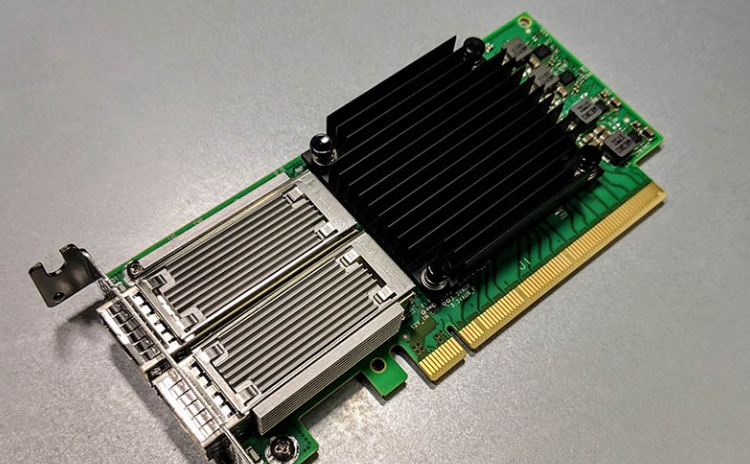
Table of Contents
ToggleWhat is an InfiniBand NIC?
An InfiniBand NIC is a hardware card that enables communication over an InfiniBand network. These cards are critical for connecting servers and data centers that rely on InfiniBand’s high-speed, low-latency data transfer capabilities. Popular InfiniBand NICs include products like NVIDIA ConnectX-7 and ConnectX-8, which offer advanced features like support for RoCE (RDMA over Converged Ethernet) and high throughput, making them ideal for environments where performance is paramount.
What is the Difference Between InfiniBand and Ethernet?
Both InfiniBand and Ethernet are used for network communication, but they serve different purposes and offer varying levels of performance. The main differences are:
- Performance: InfiniBand provides much lower latency and higher throughput than Ethernet, making it ideal for applications such as HPC, machine learning, and large-scale data processing. Ethernet, though widely used, typically has higher latency and is slower in comparison.
- Protocol: InfiniBand uses its own unique protocol, whereas Ethernet is based on the IEEE 802.3 standard.
- Scalability: InfiniBand is known for superior scalability in large clusters and data centers, providing a reliable infrastructure for workloads requiring massive data throughput.
- Cost: InfiniBand NICs and switches tend to be more expensive than their Ethernet counterparts, especially when considering the performance benefits they offer.
What is the Difference Between InfiniBand and FC?
While Fibre Channel (FC) and InfiniBand share some similarities, particularly in high-performance environments, there are notable differences:
- Purpose: Fibre Channel is primarily used in storage area networks (SANs) for connecting storage devices. InfiniBand, on the other hand, is more commonly used in high-performance computing (HPC) and enterprise networking.
- Speed: InfiniBand can provide faster data transfer speeds compared to Fibre Channel, especially in configurations like ConnectX-7 InfiniBand NIC cards.
- Cost and Flexibility: InfiniBand is often more flexible, supporting both interconnect and storage, whereas Fibre Channel is more specialized in storage applications.
What is the Difference Between RoCE and InfiniBand?
RoCE (RDMA over Converged Ethernet) is a protocol that allows for remote direct memory access (RDMA) over Ethernet. It provides low-latency, high-bandwidth communication similar to InfiniBand but uses standard Ethernet hardware, making it more cost-effective for some applications. However, there are key differences:
- Performance: InfiniBand is generally faster and more reliable for mission-critical applications due to its dedicated infrastructure.
- Network Compatibility: RoCE can operate over Ethernet infrastructure, making it more accessible for organizations that already use Ethernet. InfiniBand requires specialized switches and NICs.
- Cost: RoCE solutions tend to be more affordable since they leverage existing Ethernet networks, whereas InfiniBand often involves a higher upfront cost for NICs and switches.
Why is InfiniBand so Expensive?
The primary reason InfiniBand is more expensive than Ethernet is due to its high performance and specialized design. InfiniBand NICs like NVIDIA ConnectX-7 and ConnectX-8 offer ultra-low latency, extremely high throughput, and advanced features that are crucial for industries such as data centers, scientific research, and AI development. The cost of the InfiniBand switch and NIC cards reflects the cutting-edge technology required to support these capabilities, which makes it a premium solution.
Can InfiniBand Connect to Ethernet?
Yes, InfiniBand can connect to Ethernet, but this typically requires specialized hardware, such as InfiniBand-to-Ethernet gateways or dual-port NICs. These devices bridge the two technologies, allowing communication between Ethernet and InfiniBand networks. However, direct interoperability between the two without an intermediary is not straightforward, and the overall performance may not match that of a native InfiniBand setup.
Is InfiniBand Still Relevant?
Despite the growing adoption of Ethernet and RoCE for many networking tasks, InfiniBand remains highly relevant in specific high-performance sectors. It is still widely used in:
- High-performance computing (HPC): InfiniBand is the preferred interconnect in many supercomputers and research environments.
- Data centers and cloud services: InfiniBand provides the low latency and high bandwidth required for large-scale data centers.
- AI and machine learning: The high throughput of InfiniBand makes it an ideal solution for AI/ML workloads, especially when paired with NVIDIA GPUs.
Does InfiniBand Use IP Addresses?
InfiniBand does not natively use IP addresses for communication in the same way that Ethernet does. InfiniBand has its own addressing scheme based on Local Identifiers (LIDs) and Global Identifiers (GIDs). However, InfiniBand networks can be configured to support IP-based communication through IPoIB (IP over InfiniBand), which allows standard IP protocols to operate over InfiniBand, enabling interoperability with traditional Ethernet networks.
Popular InfiniBand Products
- NVIDIA ConnectX-7: This is one of the latest and most powerful InfiniBand NICs, designed to support next-generation HPC, AI, and cloud applications. It offers ultra-low latency, high bandwidth, and enhanced security.
- NVIDIA ConnectX-8: A more advanced version, the ConnectX-8 is expected to offer even better performance and lower latency. While the ConnectX-8 price can be high, its capabilities make it ideal for cutting-edge technologies and large-scale infrastructures.
- InfiniBand Cards and Adapters: Products like the InfiniBand adapter provide the necessary hardware to integrate InfiniBand into existing systems, offering high throughput for demanding applications.
Conclusion
InfiniBand NICs, such as the NVIDIA ConnectX-7 and ConnectX-8, remain an essential component for industries where speed and low latency are critical. While more expensive than Ethernet, InfiniBand’s performance benefits make it a top choice for high-performance computing, AI, and data centers. Though Ethernet and RoCE provide viable alternatives for some applications, InfiniBand continues to hold its ground in environments that demand the best performance. As technology advances, we can expect InfiniBand to remain a relevant and crucial part of high-performance networks.

